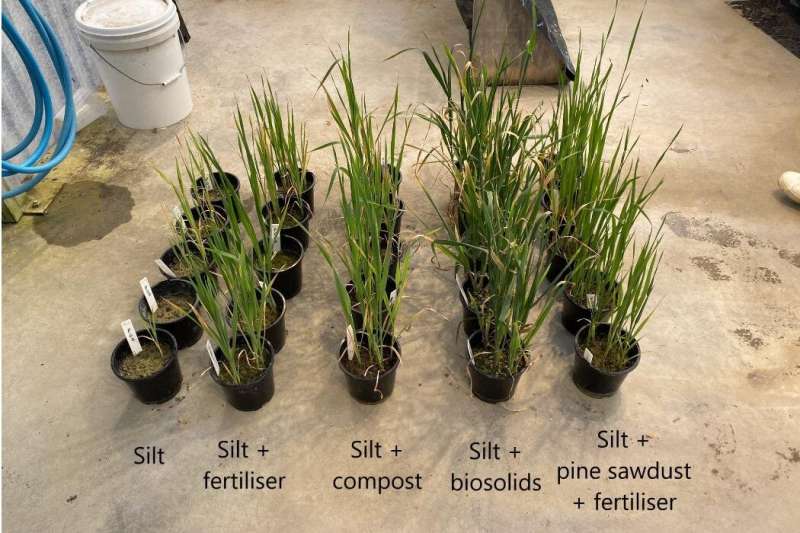
Pine slash, a significant issue following recent flooding events, may hold the key to soil rehabilitation, according to new research from the University of Canterbury and ESR.
Mingyuan (Kathy) Liu, a Master’s student at the University of Canterbury, has been investigating the use of pine waste mixed with urea fertilizer on silt-covered soils in Canterbury and Gisborne. Her findings indicate that combining pine waste with urea is more effective for plant growth compared to using urea alone, compost, or other organic matter on the soils.
Liu highlights the importance of addressing the growing issue of flooding and its impact on pine slash, a waste product from commercial forestry that can cause problems. This study demonstrates the potential to solve one waste problem by utilizing another waste problem – using pine slash to rehabilitate silt-covered soils.
“In our research, we have explored the blending of pine waste into finer sawdust particles and mixing them with the soil and fertilizer to improve drainage and promote plant growth,” says Liu. The results in a campus greenhouse show a significant increase in soil fertility, and field testing is now necessary.
In the study, oats were planted in the treated soil containing pine sawdust and fertilizer. Oats are known to improve soil texture and increase organic matter.
“Oats play a crucial role in stabilizing soil structure,” says Liu. “We observed immediate differences in the crops grown in the soil mixed with pine sawdust.”

Professor Brett Robinson, Liu’s supervisor at UC Science, expresses excitement over the preliminary results.
“Pine slash is a pressing issue not only in New Zealand but also globally. To our knowledge, there are no previous studies on rehabilitating flood-deposited sediment using pine waste. We hope to proceed to the next stage of field testing soon,” says Robinson.
The field testing would be conducted in collaboration with Dr. Maria Jesus Gutierrez-Gines, a science leader at ESR (Institute of Environmental Science and Research) who has co-supervised Liu’s research. ESR has provided technical support and analysis for the research, as well as facilitating the delivery of sediment from flood-affected Gisborne.
Professor Robinson explains that pine contains substances known to hinder plant growth. However, when applied in the trials to address sediment or silt structure, it creates the capacity for the soil to retain nutrients.
“Essentially, it acts as a sponge and breaks down into humus, which benefits the soil,” says Robinson.
Citation:
Study uses pine slash to improve soil (2023, July 24)
retrieved 24 July 2023
from https://phys.org/news/2023-07-slash-soil.html
This document is subject to copyright. Apart from any fair dealing for the purpose of private study or research, no
part may be reproduced without written permission. The content is provided for information purposes only.
Denial of responsibility! TechCodex is an automatic aggregator of the all world’s media. In each content, the hyperlink to the primary source is specified. All trademarks belong to their rightful owners, and all materials to their authors. For any complaint, please reach us at – [email protected]. We will take necessary action within 24 hours.

Jessica Irvine is a tech enthusiast specializing in gadgets. From smart home devices to cutting-edge electronics, Jessica explores the world of consumer tech, offering readers comprehensive reviews, hands-on experiences, and expert insights into the coolest and most innovative gadgets on the market.


